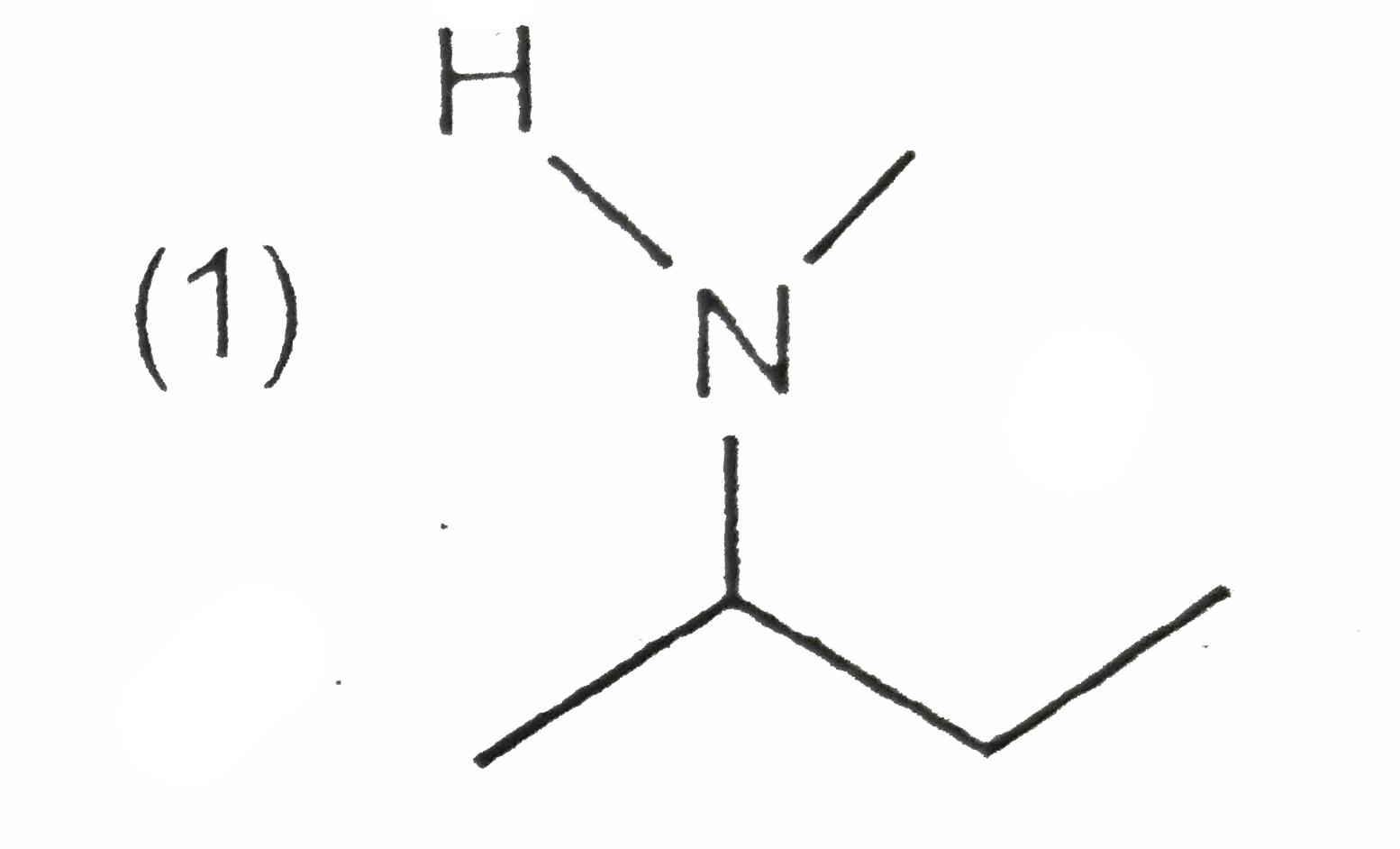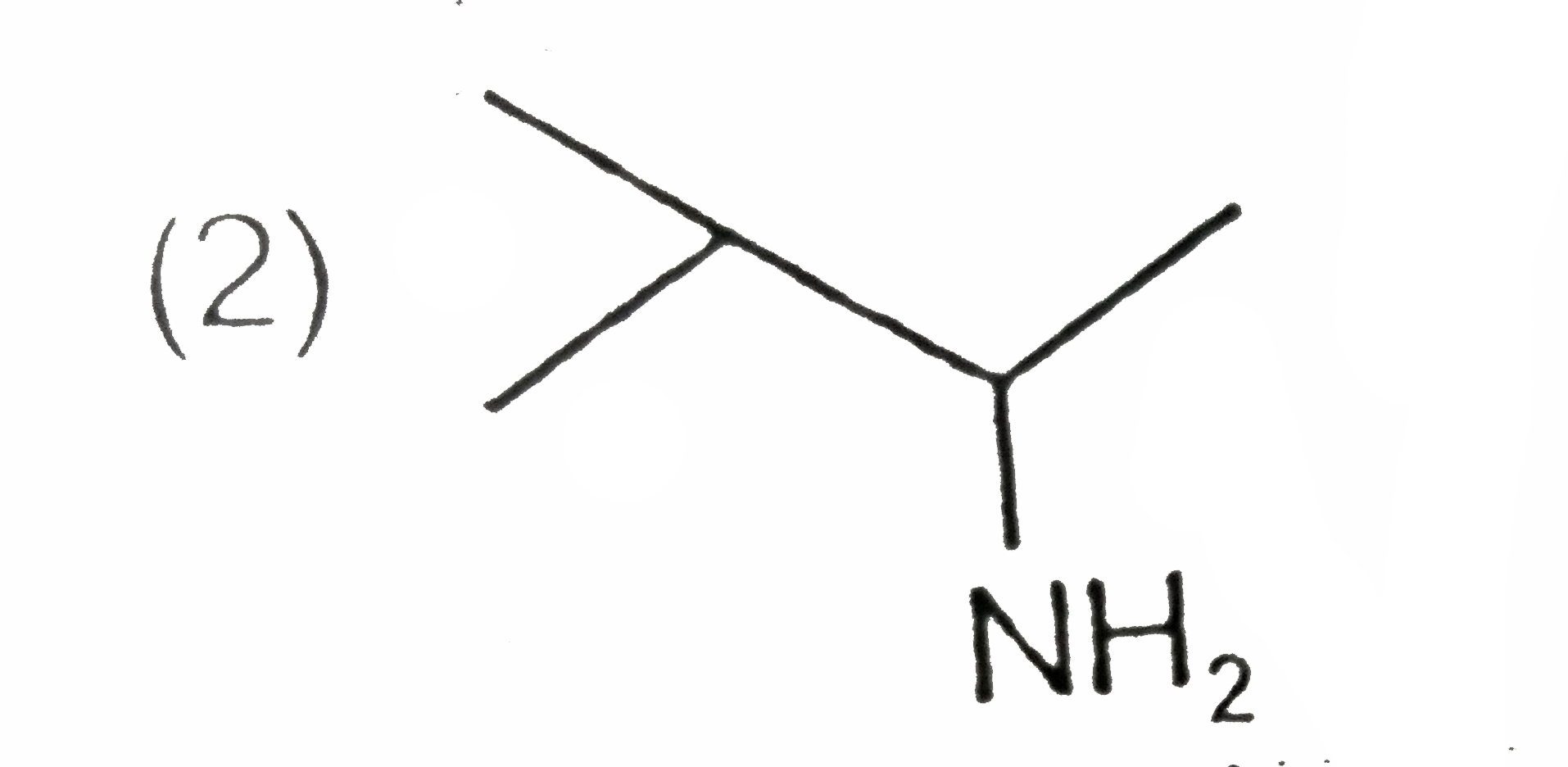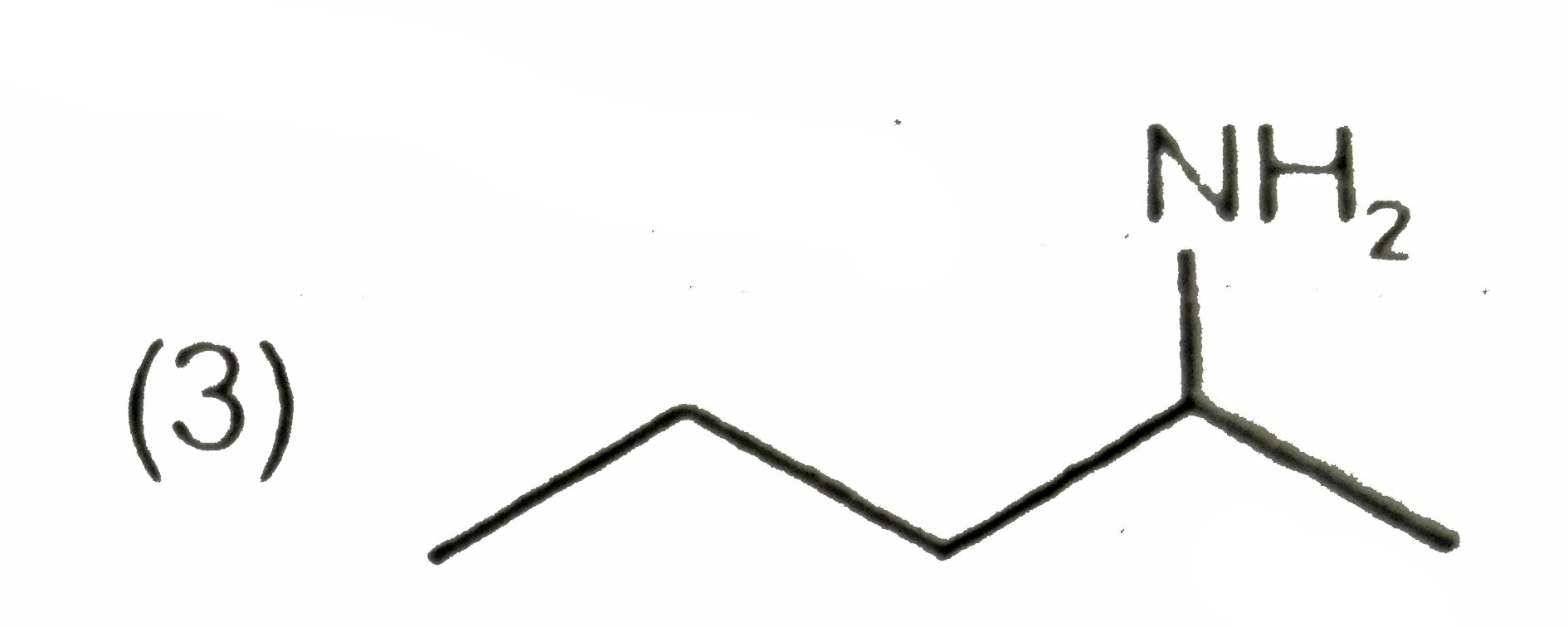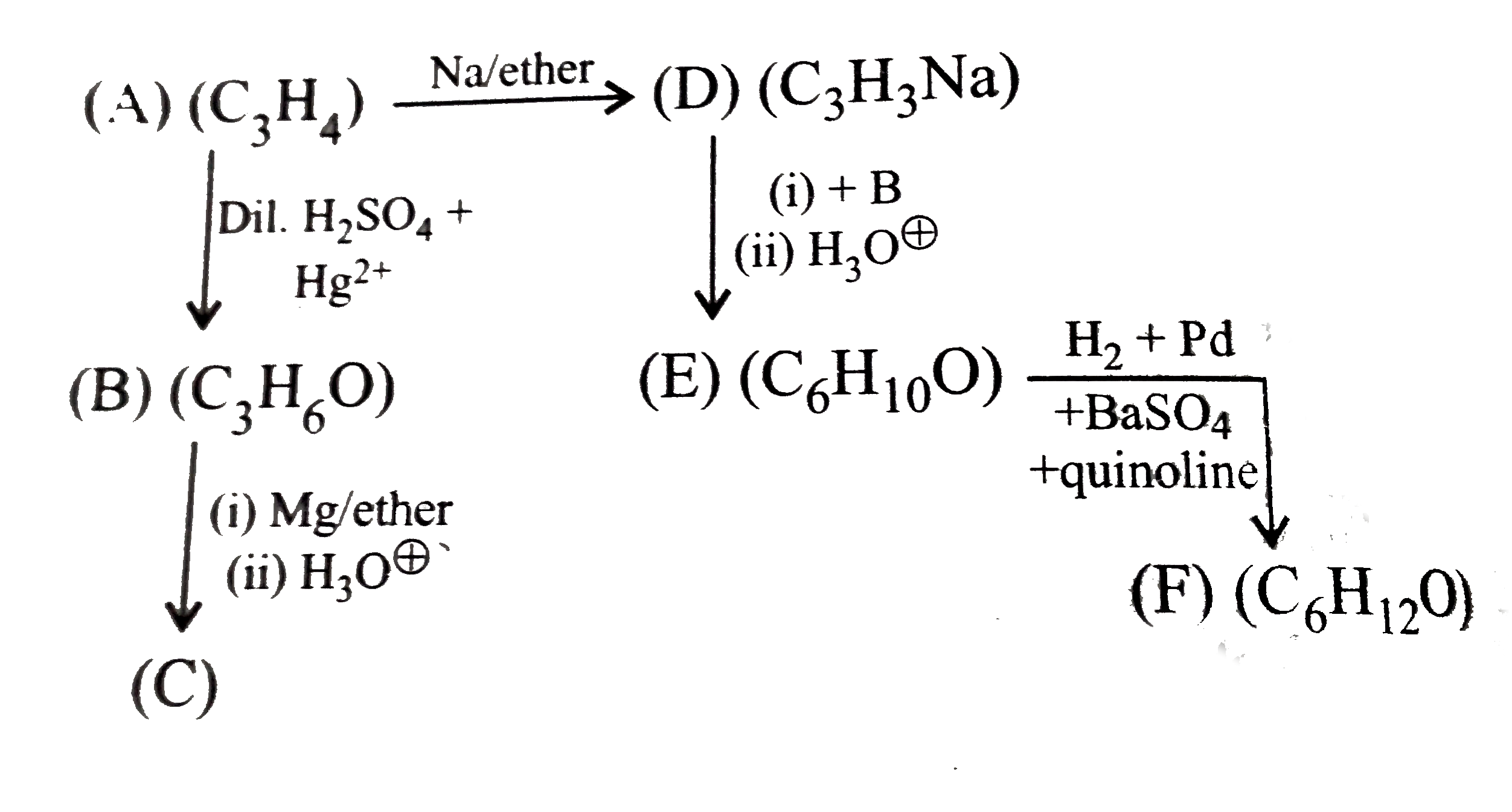The compound X (C4H11N) on treatement with nitrous acid gives a tertiary alcohol (C4H10O). The compound X must also respond to
Mustard oil reaction
Libermann nitroso reaction
Beckmann rearrangement
Carbylamine reaction.
The correct Answer is:A, D
X must be 1∘ amine as it produces alcohol by reaction with HNO2. The probable structure of X is tertiary butyl amine
CH3 CH3 | |CH3−C−NH2HNO2−−−→CH3−C−OH | | CH3 CH3 (X)1∘ Amine 3∘ Alcohol
X being 1∘ amine should also respond to mustard oil reaction and carbyl amine reaction.
Topper's Solved these Questions
- CYANIDES, ISOCYANIDES, NITROCOMPOUNDS AND AMINESBOOK - DINESH PUBLICATIONCHAPTER - CYANIDES, ISOCYANIDES, NITROCOMPOUNDS AND AMINESEXERCISE - LINKED COMPREHENSION TYPE
15 Videos
- CYANIDES, ISOCYANIDES, NITROCOMPOUNDS AND AMINESBOOK - DINESH PUBLICATIONCHAPTER - CYANIDES, ISOCYANIDES, NITROCOMPOUNDS AND AMINESEXERCISE - Matrix type
6 Videos
- CYANIDES, ISOCYANIDES, NITROCOMPOUNDS AND AMINESBOOK - DINESH PUBLICATIONCHAPTER - CYANIDES, ISOCYANIDES, NITROCOMPOUNDS AND AMINESEXERCISE - REVISION QUESTION
186 Videos
- CO-ORDINATION COMPOUNDS BOOK - DINESH PUBLICATIONCHAPTER - CO-ORDINATION COMPOUNDS EXERCISE - Brain storming multiple choice question
12 Videos
- D-AND -F BLOCK ELEMENTSBOOK - DINESH PUBLICATIONCHAPTER - D-AND -F BLOCK ELEMENTSEXERCISE - BRAIN STORMING MULTIPLE CHOICE QUESTIONS (MCQS)
13 Videos
Similar Questions
An optically inactive compound [A] of mollecular formula C4H11N on treatement with nitrous acid gives an alcohol [B] which on heating with excess of concentrated sulphuric acid at 440 K gives an alkene [C]. The alkene [C] on treatment with HBr gives an optical compound [D] of molecular formula C4H8Br. Identify [A], [B], [C] and [D].
View SolutionAn optically active compound [A] C5H13N reacts with alkaline CHCl3 to give an optically active, compound [B]. [A] also reacts with nitrous acid to give an optically inactive alcohol [C] C5H11OH as the major product. What would be the structure of [A]?
View Solution
Knowledge Check
The compound (X) with M.F. C4H11N on treatment with HNO2 gives a tertiary alcohol with M.F. C4H10O. The compound (X) will give
ACarbylamine reactionBHofmann mustard oil reactionCDiazonium salt as intermediate with HNO2DGives 2-methyl-2-nitropropane on oxidation with KMnO4Compound [X]C4H11N reacts with p-toluence sulphonyl chloride in aqueous NaOH to give a solid. The compound [X] is:
ACH3−CH2−CH2−CH2−NH2BH3C−CH∣CH3−CH2−NH2CCH3CH2−NH−CH2−CH3DH3C−CH2−N∣CH3−CH3An optically active compound [A] C5H13N reacts with alkaline CHCl3 to give an optically active, compound [B]. [A] also reacts with nitrous acid to give an optically inactive alcohol [C] C5H11OH as the major product. What would be the structure of [A]?
A B
B C
C D
D
C4H11N on reaction with HNO2 forms tertiary alcohol . Thus , C4H11N is
View Solution
The compound F(C6H12O) on oxidative ozonolysis yirlds acetic acid and a compound (G) (C4H8O3). The new compound (G) on heating gives:
View SolutionCompound [X]C4H11N reacts with p− toluene sulphonyl chloride in aqueous NaOH to give a solid. The compound [X] is :
View SolutionAn organic compound (A), C2H5NO2 gives on reduction another compound (B) C2H7N. The reaction of nitrous acid on (B) evolves nitrogen and gives another compound (C) C2H6O. The compound (C) on oxidation gives acetic acid. The compounds A, B, C are
View SolutionAn alcohol (A) C4H10O on oxidation with acidified K2Cr2O7 gives a carboxylic acid (B) C4H8O2. (A) on treatment with conc. H2SO4 produces (C) C4H8. (C) on treatment with dil. H2SO4 gives (D) C4H10O . The compound (D) is isomeric with compound (A). Compound (D) resist oxidation . What are (A) and (D) respectively ?
View Solution
